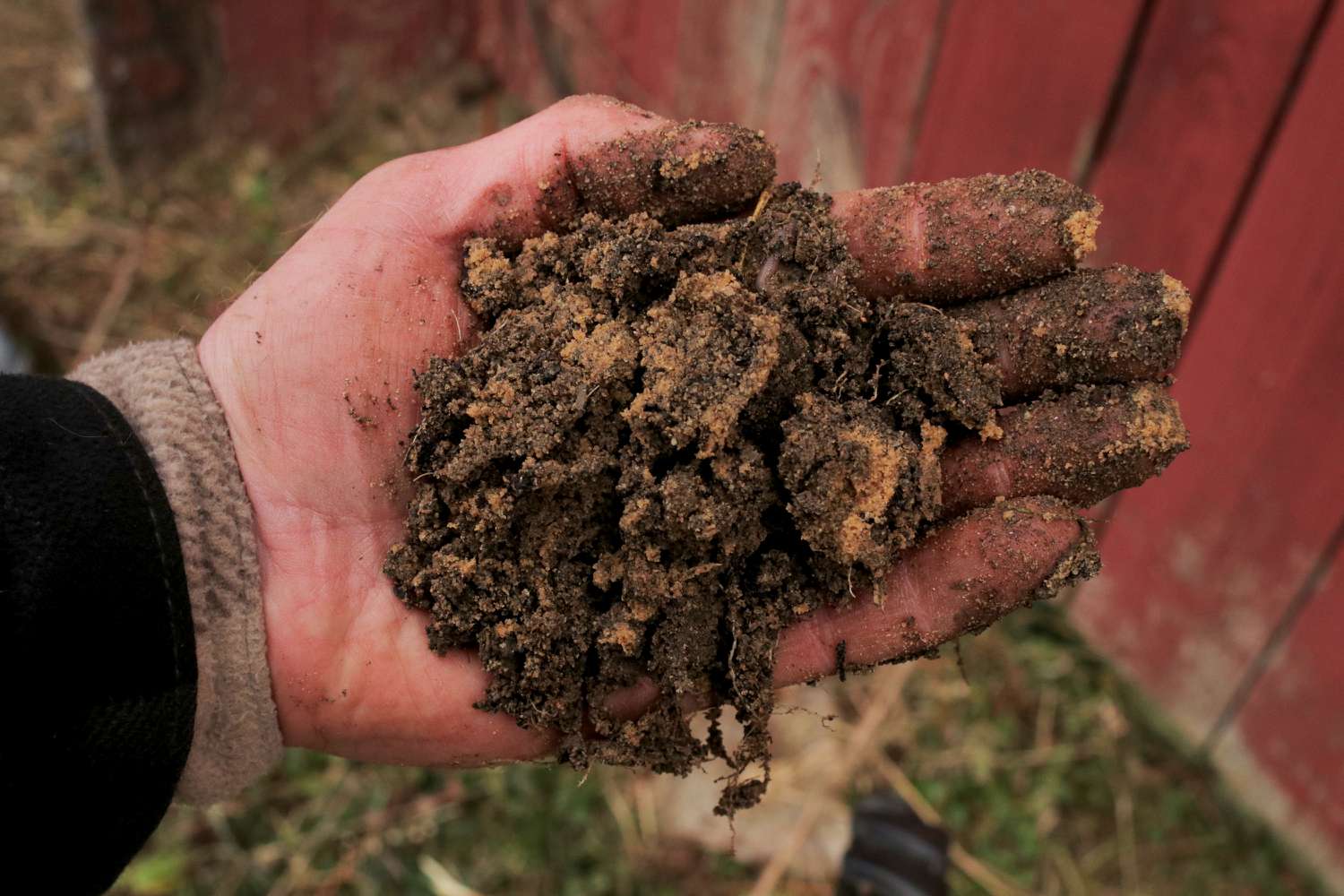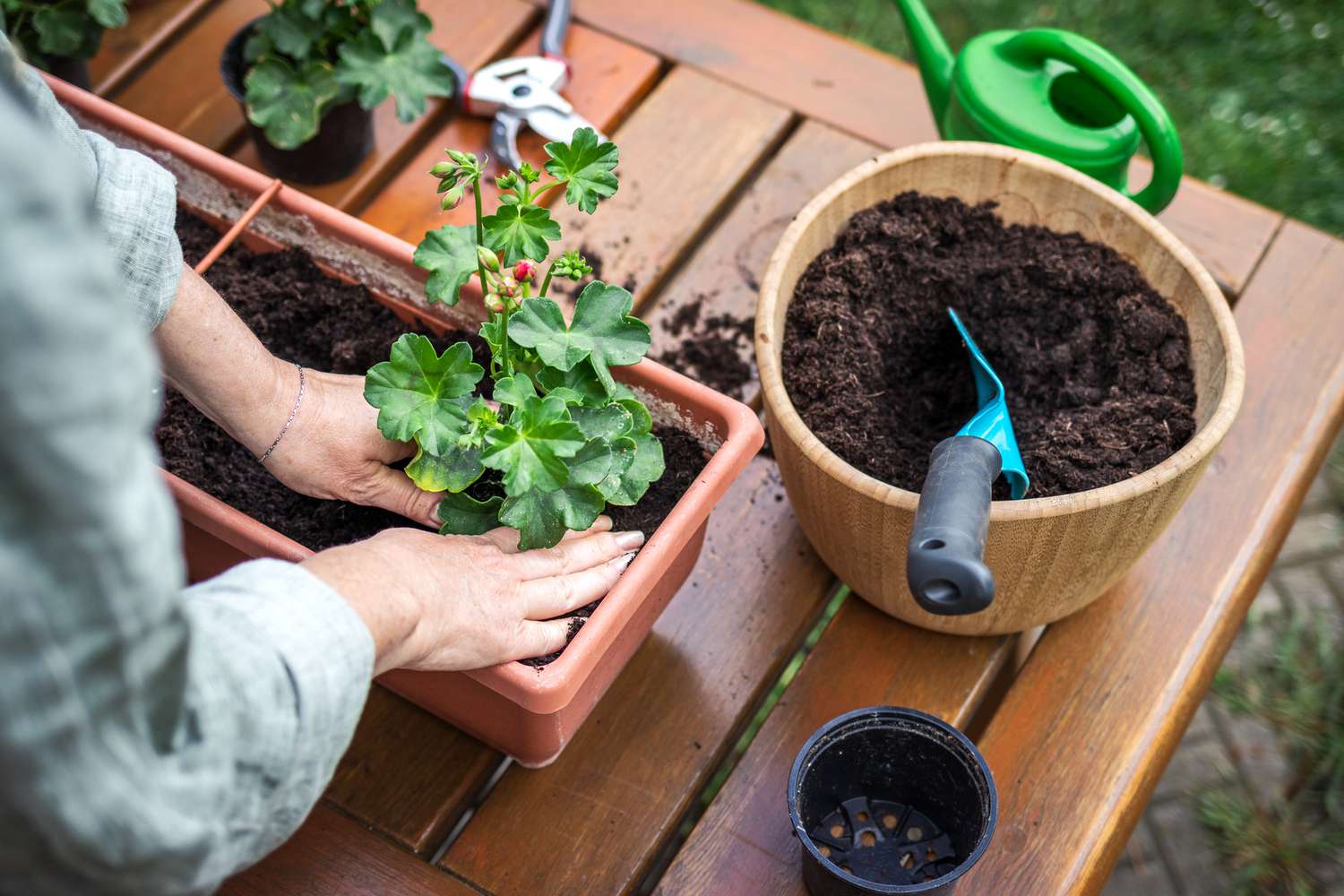Home>Gardening Basics>Understanding Soil>What To Do With Used Potting Soil


Understanding Soil
What To Do With Used Potting Soil
Published: February 11, 2024
Discover the best ways to manage and recycle used potting soil while gaining a deeper understanding of soil composition and its impact on plant growth. Explore sustainable practices for reusing soil to enhance your gardening experience.
(Many of the links in this article redirect to a specific reviewed product. Your purchase of these products through affiliate links helps to generate commission for Chicagolandgardening.com, at no extra cost. Learn more)
Table of Contents
Introduction
Soil is a precious resource that sustains life on our planet. It is a complex mixture of minerals, organic matter, water, and air, teeming with microscopic organisms. Potting soil, specifically formulated for container gardening, is a valuable medium for nurturing plants. However, as gardening enthusiasts, we often find ourselves with leftover or used potting soil. The question then arises: what should we do with it?
Used potting soil still holds potential for supporting plant growth and contributing to a sustainable gardening practice. Whether it's rejuvenating the soil for reuse, composting it to create nutrient-rich organic matter, or incorporating it into garden beds, there are several eco-friendly options to consider. Additionally, understanding the proper methods for disposing of used potting soil is crucial for environmental responsibility.
In this article, we will explore various ways to maximize the value of used potting soil while minimizing waste. From revitalizing its fertility to integrating it into larger gardening projects, there are numerous possibilities for repurposing this valuable resource. Let's delve into the world of used potting soil and discover how it can continue to play a vital role in our gardening endeavors.
Rejuvenating Used Potting Soil
When considering what to do with used potting soil, one option is to rejuvenate it for continued use in container gardening. Over time, the organic matter in potting soil breaks down, and the soil becomes compacted, potentially leading to nutrient depletion. However, with proper care and attention, used potting soil can be revitalized to support healthy plant growth once again.
To begin the rejuvenation process, start by removing any visible debris, such as roots or large clumps of organic matter, from the used potting soil. This initial step helps improve aeration and drainage within the soil. Next, consider incorporating fresh organic material, such as compost or well-aged manure, to replenish the soil’s nutrient content. Additionally, amending the soil with perlite or vermiculite can enhance its texture and improve drainage, promoting a healthier growing environment for plants.
It’s also essential to assess the pH level of the used potting soil. Over time, the pH may become imbalanced, affecting nutrient availability to plants. Utilize a pH testing kit to determine the soil’s acidity or alkalinity, and adjust it as necessary using amendments like lime or sulfur.
Furthermore, consider adding a balanced, slow-release fertilizer to the rejuvenated potting soil to provide essential nutrients for plant growth over an extended period. Thoroughly mix the amendments into the soil to ensure an even distribution of nutrients.
By following these rejuvenation steps, you can breathe new life into used potting soil, preparing it to nurture another season of vibrant container gardens. This sustainable approach not only reduces waste but also saves money by maximizing the longevity of your potting soil supply.
Composting Used Potting Soil
Composting used potting soil is a sustainable and environmentally friendly way to repurpose this valuable resource. Through the composting process, the organic components of the soil can be broken down and transformed into nutrient-rich humus, which serves as a natural soil conditioner and fertilizer for future gardening endeavors.
Begin by creating a dedicated composting area or utilizing a compost bin specifically for the used potting soil. Combine the soil with other organic materials, such as kitchen scraps, yard waste, and dry leaves, to create a well-balanced compost pile. This diverse mixture provides the necessary carbon and nitrogen balance for efficient decomposition.
It’s important to regularly turn the compost pile to aerate the materials and facilitate decomposition. This process encourages the breakdown of the used potting soil and other organic matter, resulting in a rich compost that enhances soil structure and fertility.
As the composting process progresses, monitor the moisture levels to ensure that the compost pile remains adequately damp but not waterlogged. Proper moisture levels support the activity of beneficial microorganisms, accelerating the decomposition of the organic materials, including the used potting soil.
After the composting period, the resulting humus can be incorporated into garden beds or used as a top dressing for potted plants. This nutrient-dense compost enriches the soil, promotes microbial activity, and improves overall plant health and vitality.
By composting used potting soil, you not only divert organic waste from landfills but also create a valuable resource that contributes to the sustainability of your gardening practices. Embracing composting as a means of recycling and renewing used potting soil aligns with the principles of environmental stewardship and ecological balance.
Using Used Potting Soil in Garden Beds
Repurposing used potting soil in garden beds offers a sustainable and cost-effective approach to enhancing soil quality and promoting plant growth. Whether you have excess potting soil from container gardening or are looking to enrich the soil in your outdoor beds, incorporating used potting soil can be a valuable practice.
Prior to integrating the used potting soil into garden beds, it’s essential to assess its condition. Remove any lingering roots, debris, or compacted clumps from the soil to ensure a uniform texture. Additionally, consider amending the used potting soil with organic matter, such as compost, to replenish its nutrient content and improve its overall structure.
When adding the used potting soil to garden beds, blend it thoroughly with the existing soil to create a well-integrated mixture. This combination introduces beneficial microorganisms and organic material to the garden beds, fostering a healthy and balanced soil ecosystem.
Furthermore, the incorporation of used potting soil can contribute to improved water retention and drainage in garden beds, particularly in areas with sandy or compacted soils. The organic matter within the potting soil enhances soil structure, promoting aeration and moisture retention, which are essential for supporting the root systems of plants.
As the used potting soil integrates with the garden beds, it continues to provide a reservoir of essential nutrients for plants, supporting their growth and development. This sustainable approach reduces waste, maximizes the use of resources, and contributes to the overall health and productivity of garden beds.
By utilizing used potting soil in garden beds, you can embrace a holistic approach to soil management, fostering a thriving environment for plants while minimizing the environmental impact of discarded soil. This practice aligns with sustainable gardening principles, demonstrating a conscientious use of resources and a commitment to preserving the vitality of garden ecosystems.
Disposing of Used Potting Soil
When it comes to the disposal of used potting soil, it’s important to consider environmentally responsible options that minimize the impact on landfills and natural ecosystems. While used potting soil may no longer be suitable for immediate gardening use, there are several sustainable methods for its proper disposal.
One eco-friendly approach to disposing of used potting soil is to incorporate it into outdoor landscaping projects. Whether filling in low-lying areas, leveling uneven ground, or enhancing the soil around trees and shrubs, used potting soil can serve a practical purpose in outdoor landscaping endeavors. By repurposing the soil in this manner, you contribute to the improvement of outdoor spaces while reducing waste.
Another sustainable option is to donate the used potting soil to community gardens, local farms, or gardening initiatives. Many organizations and individuals may welcome the opportunity to utilize the soil for various horticultural projects, promoting a culture of resource sharing and community engagement.
If repurposing or donating the used potting soil is not feasible, consider composting it as an alternative method of disposal. By integrating the soil into a compost pile along with other organic materials, you can facilitate its decomposition and transformation into nutrient-rich humus, which can then be utilized to enrich garden beds or amend soil in outdoor spaces.
It’s important to note that certain types of used potting soil, particularly those that have been used to grow plants affected by diseases or pests, may not be suitable for repurposing or donation. In such cases, it is advisable to dispose of the soil in a manner that prevents the spread of pathogens and pests. Local waste disposal facilities or recycling centers may offer guidance on the proper disposal of contaminated soil.
By conscientiously considering sustainable disposal options for used potting soil, you contribute to the preservation of natural resources and the reduction of waste in landfills. Embracing environmentally responsible practices in the disposal of used potting soil aligns with the principles of sustainable living and ecological stewardship.
Conclusion
Used potting soil, often considered a byproduct of gardening endeavors, holds the potential for a second life through sustainable practices. Whether it’s rejuvenating the soil for continued use, composting it to create nutrient-rich humus, integrating it into garden beds, or responsibly disposing of it, there are numerous eco-friendly options to explore.
By embracing the rejuvenation of used potting soil, gardeners can extend its lifespan and maximize its value. Through the addition of organic amendments, pH adjustments, and balanced fertilization, the soil can be revitalized to support healthy plant growth in future growing seasons. This approach not only reduces waste but also promotes resourcefulness and cost-effectiveness in gardening practices.
Composting used potting soil offers a sustainable means of repurposing organic matter, contributing to the creation of nutrient-rich humus that enriches soil and supports plant vitality. The composting process transforms the soil into a valuable resource that aligns with the principles of environmental stewardship and ecological balance.
Integrating used potting soil into garden beds fosters a holistic approach to soil management, enhancing soil structure, moisture retention, and nutrient availability. This sustainable practice reduces waste while promoting the health and productivity of garden ecosystems, demonstrating a conscientious use of resources.
When considering the disposal of used potting soil, environmentally responsible options such as repurposing in outdoor landscaping projects, donating to community initiatives, or composting should be prioritized. By conscientiously considering sustainable disposal methods, gardeners contribute to the preservation of natural resources and the reduction of waste in landfills, aligning with the principles of sustainable living.
In conclusion, the journey of used potting soil does not need to end with its initial use. By embracing sustainable practices, gardeners can unlock the potential of this valuable resource, minimizing waste, and promoting environmental responsibility. Through thoughtful consideration and mindful actions, used potting soil can continue to play a vital role in nurturing vibrant plant life and contributing to the sustainability of gardening practices.



